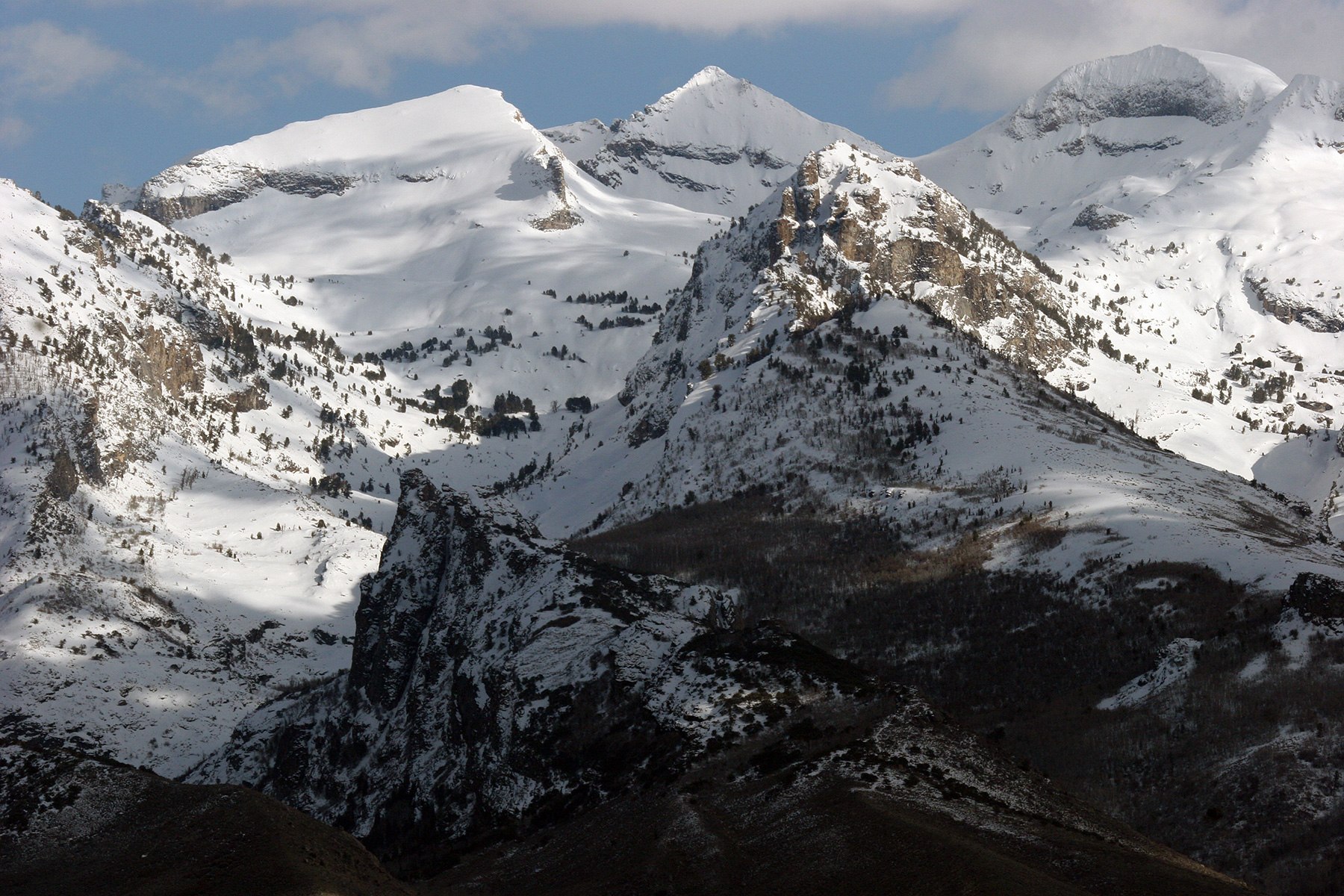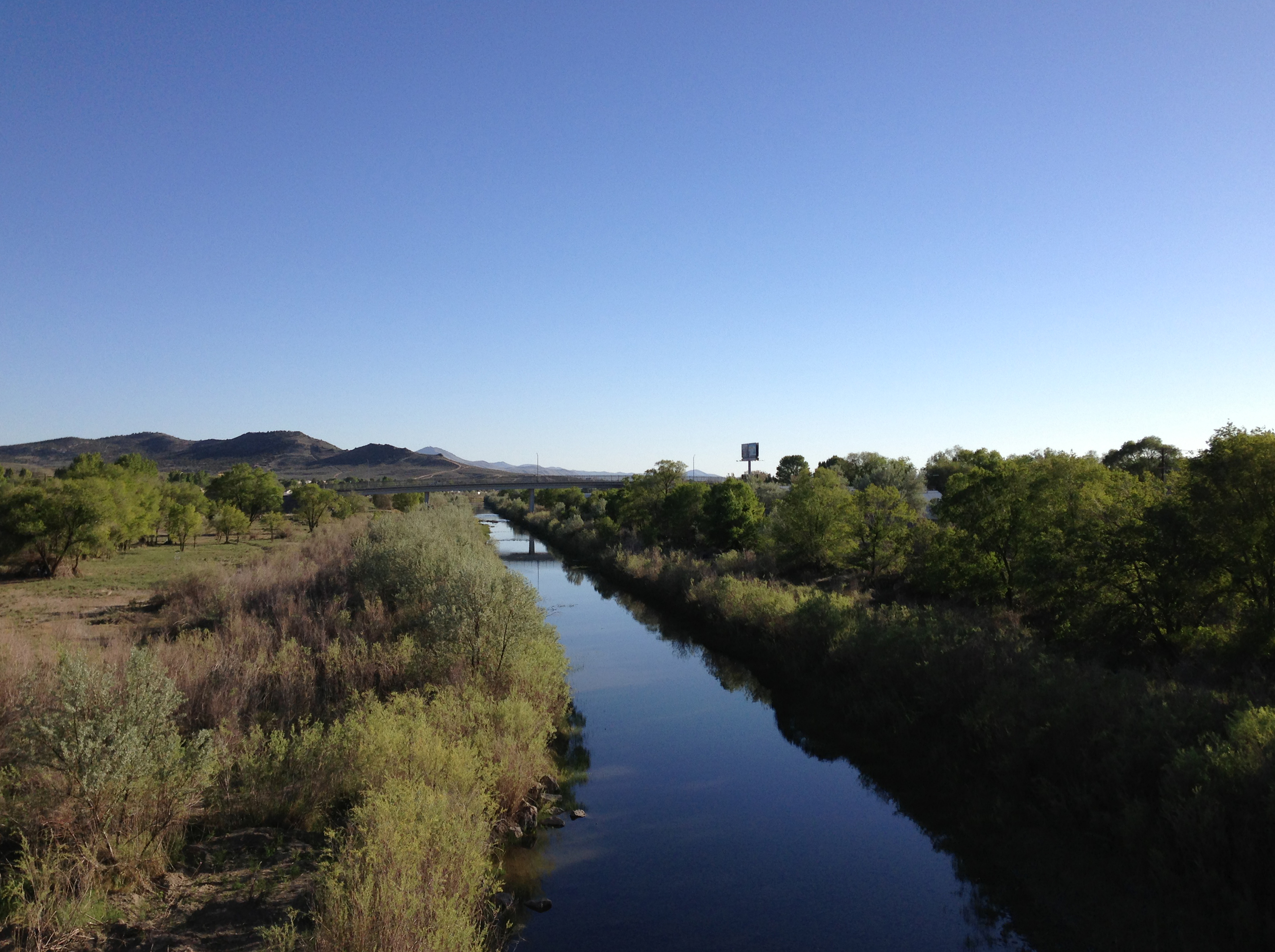|
Soldier Lakes (Nevada)
The Soldier Lakes are a cluster of more than a dozen glacial tarns in the Ruby Mountains, in Elko County in the northeastern part of the state of Nevada. They are located on the shelf of Soldier Basin on the eastern side of the mountains (although draining to the west via Soldier Creek) at an elevation of . They have a combined area of approximately , and a depth of up to . The Soldier Lakes are some of the sources of Soldier Creek, which flows from the eastern side of the Ruby Mountains through Soldier Canyon, exits the mountains to the west into Lamoille Valley, and then merges with the main branch of the Humboldt River The Humboldt River is an extensive river drainage system located in north-central Nevada. It extends in a general east-to-west direction from its headwaters in the Jarbidge, Independence, and Ruby Mountains in Elko County, to its terminus in the .... References {{authority control Lakes of Elko County, Nevada Ruby Mountains Lakes of Nevada Lakes of t ... [...More Info...] [...Related Items...] OR: [Wikipedia] [Google] [Baidu] |
Ruby Mountains
The Ruby Mountains are a mountain range, primarily located within Elko County with a small extension into White Pine County, in Nevada, United States. Most of the range is included within the Humboldt-Toiyabe National Forest. The range reaches a maximum elevation of on the summit of Ruby Dome. To the north is Secret Pass and the East Humboldt Range, and from there the Rubies run south-southwest for about . To the east lies Ruby Valley, and to the west lie Huntington and Lamoille Valleys. The Ruby Mountains are the only range of an introduced bird, the Himalayan snowcock, in North America. The 'Rubies' were named after the garnets found by early explorers. The central core of the range shows extensive evidence of glaciation during recent ice ages, including U-shaped canyons, moraines, hanging valleys, and steeply carved granite mountains, cliffs, and cirques. All of these features can be seen from 12-mile Lamoille Canyon Road, a National Forest Scenic Byway which traverses L ... [...More Info...] [...Related Items...] OR: [Wikipedia] [Google] [Baidu] |
Tarn (lake)
A tarn (or corrie loch) is a Proglacial lake, proglacial mountain lake, pond or pool, formed in a cirque excavated by a glacier. A moraine may form a natural dam below a tarn. Etymology The word is toponymy, derived from the Old Norse word ''tjörn'' ("a small mountain lake without tributaries") meaning pond. In parts of Northern England - predominantly Cumbria but also areas of North Lancashire and North Yorkshire - 'tarn' is widely used as the name for small lakes or ponds, regardless of their location and origin (e.g. Talkin Tarn, Urswick Tarn, Malham Tarn). Similarly, in Scandinavian languages, a ''tjern'' or ''tjørn'' (both Norwegian) or ''tjärn'' or ''tärn'' (both Swedish) is a small natural lake, often in a forest or with vegetation closely surrounding it or growing into the tarn. The specific technical use for a body of water in a glacial corrie comes from high number of tarns found in corries in the Lake District, an upland area in Cumbria. Nonetheless, there are ... [...More Info...] [...Related Items...] OR: [Wikipedia] [Google] [Baidu] |
Tarn (lake)
A tarn (or corrie loch) is a Proglacial lake, proglacial mountain lake, pond or pool, formed in a cirque excavated by a glacier. A moraine may form a natural dam below a tarn. Etymology The word is toponymy, derived from the Old Norse word ''tjörn'' ("a small mountain lake without tributaries") meaning pond. In parts of Northern England - predominantly Cumbria but also areas of North Lancashire and North Yorkshire - 'tarn' is widely used as the name for small lakes or ponds, regardless of their location and origin (e.g. Talkin Tarn, Urswick Tarn, Malham Tarn). Similarly, in Scandinavian languages, a ''tjern'' or ''tjørn'' (both Norwegian) or ''tjärn'' or ''tärn'' (both Swedish) is a small natural lake, often in a forest or with vegetation closely surrounding it or growing into the tarn. The specific technical use for a body of water in a glacial corrie comes from high number of tarns found in corries in the Lake District, an upland area in Cumbria. Nonetheless, there are ... [...More Info...] [...Related Items...] OR: [Wikipedia] [Google] [Baidu] |
Elko County, Nevada
Elko County is a county in the northeastern corner of Nevada, United States. As of the 2020 census, the population was 53,702. Its county seat is Elko. The county was established on March 5, 1869, from Lander County. Elko County is the fourth-largest county by area in the contiguous United States, ranking lower when the boroughs of Alaska are included. It is one of only 10 counties in the U.S. with more than of area. Elko County is part of the Elko, NV Micropolitan Statistical Area. It contains 49.8 percent of the Duck Valley Indian Reservation, set up in the late 19th century for the Shoshone-Paiute peoples; they are a federally recognized tribe. Although slightly more than 50% of the reservation is across the border in Owyhee County, Idaho, the majority of tribal members live on the Nevada side. The reservation's land area is . History This area was long inhabited by Native American tribes of the Plateau, particularly the Western Shoshone, Northern Paiute, and Bannock p ... [...More Info...] [...Related Items...] OR: [Wikipedia] [Google] [Baidu] |
Nevada
Nevada ( ; ) is a U.S. state, state in the Western United States, Western region of the United States. It is bordered by Oregon to the northwest, Idaho to the northeast, California to the west, Arizona to the southeast, and Utah to the east. Nevada is the List of U.S. states and territories by area, 7th-most extensive, the List of U.S. states and territories by population, 32nd-most populous, and the List of U.S. states and territories by population density, 9th-least densely populated of the U.S. states. Nearly three-quarters of Nevada's people live in Clark County, Nevada, Clark County, which contains the Las Vegas–Paradise, NV MSA, Las Vegas–Paradise metropolitan area, including three of the state's four largest incorporated cities. Nevada's capital is Carson City, Nevada, Carson City. Las Vegas is the largest city in the state. Nevada is officially known as the "Silver State" because of the importance of silver to its history and economy. It is also known as the "Battle ... [...More Info...] [...Related Items...] OR: [Wikipedia] [Google] [Baidu] |
Humboldt River
The Humboldt River is an extensive river drainage system located in north-central Nevada. It extends in a general east-to-west direction from its headwaters in the Jarbidge, Independence, and Ruby Mountains in Elko County, to its terminus in the Humboldt Sink, approximately 225 direct miles away in northwest Churchill County. Most estimates put the Humboldt River at to long however, due to the extensive meandering nature of the river, its length may be more closely estimated at 380 miles (612 km). It is located within the Great Basin Watershed and is the third longest river in the watershed behind the Bear River at 355 miles (570 km) and the Sevier River at 325 miles (523 km). The Humboldt River Basin is the largest sub-basin of the Great Basin encompassing an area of 16,840 square miles (43,615 km2). It is the only major river system wholly contained within the state of Nevada. It is the only natural transportation artery across the Great Basin and has hi ... [...More Info...] [...Related Items...] OR: [Wikipedia] [Google] [Baidu] |
Lakes Of Elko County, Nevada
A lake is an area filled with water, localized in a basin, surrounded by land, and distinct from any river or other outlet that serves to feed or drain the lake. Lakes lie on land and are not part of the ocean, although, like the much larger oceans, they do form part of the Earth's water cycle. Lakes are distinct from lagoons, which are generally coastal parts of the ocean. Lakes are typically larger and deeper than ponds, which also lie on land, though there are no official or scientific definitions. Lakes can be contrasted with rivers or streams, which usually flow in a channel on land. Most lakes are fed and drained by rivers and streams. Natural lakes are generally found in mountainous areas, rift zones, and areas with ongoing glaciation. Other lakes are found in endorheic basins or along the courses of mature rivers, where a river channel has widened into a basin. Some parts of the world have many lakes formed by the chaotic drainage patterns left over from the last ic ... [...More Info...] [...Related Items...] OR: [Wikipedia] [Google] [Baidu] |
Lakes Of Nevada
A lake is an area filled with water, localized in a basin, surrounded by land, and distinct from any river or other outlet that serves to feed or drain the lake. Lakes lie on land and are not part of the ocean, although, like the much larger oceans, they do form part of the Earth's water cycle. Lakes are distinct from lagoons, which are generally coastal parts of the ocean. Lakes are typically larger and deeper than ponds, which also lie on land, though there are no official or scientific definitions. Lakes can be contrasted with rivers or streams, which usually flow in a channel on land. Most lakes are fed and drained by rivers and streams. Natural lakes are generally found in mountainous areas, rift zones, and areas with ongoing glaciation. Other lakes are found in endorheic basins or along the courses of mature rivers, where a river channel has widened into a basin. Some parts of the world have many lakes formed by the chaotic drainage patterns left over from the last ic ... [...More Info...] [...Related Items...] OR: [Wikipedia] [Google] [Baidu] |


.png)


_2020.jpg)